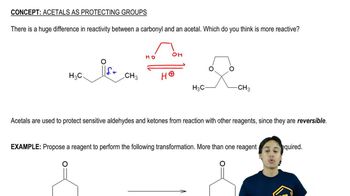Show how you can synthesize the following tertiary amine three different ways, each using a different secondary amine and adding the final substituent by
(a) reductive amination (3 ways).
 Verified step by step guidance
Verified step by step guidance Verified video answer for a similar problem:
Verified video answer for a similar problem:
